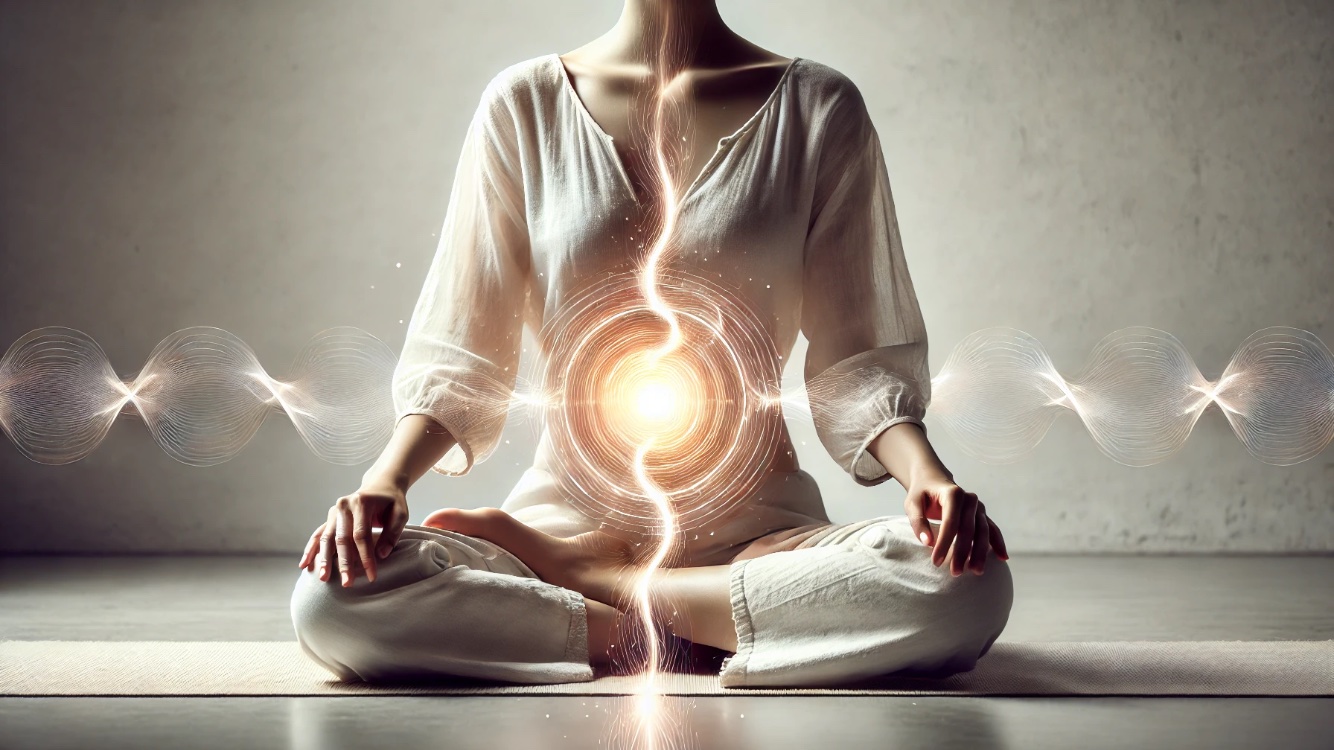
The Navel Center: Physiology
9 months ago By Yogi AnoopAccording to Yogi Anoop: The Navel as the Center of Energy Balance, Physiology, and Meditation
Have you ever considered that the navel is not just a biological structure but also a center of stability for the body and mind? In the context of yoga, Ayurveda, and modern medical science, the navel holds significant importance. While yoga and ancient medical texts consider it the foundation of energy balance, modern science recognizes it as one of the key centers for digestion and the nervous system.
When discussing this topic with Delhi-based Yoga & Meditation master Yogi Anoop, he explained that the navel is not merely a physical organ but also regulates the body’s biological functions, as well as mental and energetic balance. He emphasized that if the navel’s balance is disturbed, it does not only lead to digestive disorders but also causes mental stress, fatigue, and energetic instability.
In yoga science, the navel is referred to as the “Manipura Chakra,” which is considered the primary reservoir of energy (prana shakti) in the body. When it is balanced, a person feels energetic, confident, and mentally stable. Modern medicine also confirms that the Autonomic Nervous System (ANS) has a complex structure in the navel region, which controls digestion, blood circulation, and the functioning of internal organs. However, while modern science views it purely as a biological process, yoga and Ayurveda connect it to energy and psychological balance.
Navel Displacement (Navel Displacement Syndrome) is a condition where the navel shifts slightly from its natural position. Yogi Anoop explains that this issue commonly arises when the abdominal muscles weaken or when there is excessive pressure on the internal organs. This leads to an imbalance in the body, causing various physical and mental problems. According to yoga and Ayurveda, the primary symptoms of navel displacement include a feeling of heaviness in the stomach, bloating, excessive burping, constipation, indigestion, and a lack of energy in the body.
From the perspective of modern science, this condition occurs due to instability in the digestive and nervous systems. When excessive gas accumulates in the stomach, it affects the Vagus Nerve, thereby disturbing digestion and internal balance.
Addressing the curiosity surrounding the deep practices of yoga and meditation, Yogi Anoop clarifies that meditation can assist in restoring the body’s natural balance. Practicing meditation activates the self-healing system, allowing internal organs to gradually return to their optimal state.
But can meditation alone correct navel displacement? Responding to this question, Yogi Anoop states that if the displacement is mild, meditation and pranayama can help restore balance. However, if the issue is more severe, meditation alone may not be enough. This is because when abdominal muscles are under extreme tension, a person may not even be able to sit comfortably for meditation.
He compares this condition to an overinflated football—if too much air is pumped into it, even a slight push will make it unstable. Similarly, when excessive gas and tension accumulate in the stomach, the body cannot remain stable, making meditation difficult. Therefore, if navel displacement is significant, it is essential to first restore balance through yoga and pranayama, only then can meditation provide complete benefits.
Yogi Anoop also highlights that the navel is not just connected to digestion but also to mental states. When a person experiences extreme stress, their Sympathetic Nervous System (SNS) becomes active, triggering the “fight-or-flight” response in the body. This causes tension in the abdominal muscles, potentially leading to navel imbalance.
He further explains that people who talk excessively also exert additional pressure on their abdomen. Such individuals often experience contraction in their abdominal region, affecting both the navel and digestive system. Meditation can help eliminate this habitual pattern, but for meditation to be effective, the body and abdomen must first be in a balanced state.
Before practicing meditation, Hatha Yoga and Pranayama are essential. Yogi Anoop emphasizes that in the eight limbs of yoga, meditation (Dhyana, Dharana, Samadhi) comes only after Yama, Niyama, Asana, and Pranayama. If the body is unbalanced, sitting for meditation may not be beneficial. He states that meditation is effective only when the body attains stability. If the body is under stress, with issues such as gas, bloating, or navel imbalance, one cannot remain seated in meditation. Therefore, pranayama and Hatha Yoga must be practiced first to stabilize the body.
Yogi Anoop suggests the following solutions: First and foremost, one must incorporate pranayama and yogic techniques into their routine. Nadi Shodhana Pranayama maintains mental and physical balance, while Kapalabhati and Agnisar Kriya strengthen the navel region. Specific navel-focused asanas such as Naukasana (Boat Pose), Paschimottanasana (Seated Forward Bend), and Pawanmuktasana (Wind-Relieving Pose) help in balancing the navel.
According to Yogi Anoop, as long as there is excessive gas and imbalance in the stomach, one should avoid meditation. The focus should first be on balancing the abdomen and navel through asanas and pranayama. Once the body reaches a stable state, meditation can be practiced. Meditation will further reduce mental stress, relieving additional pressure on the navel region.
The navel is not just a part of the body; it is the center of energy balance, mental peace, and health. Both meditation and yoga are directly related to the navel, but when the body is unbalanced, meditation alone cannot solve the issue. To achieve complete well-being, the right sequence of yoga and meditation must be followed—first stabilizing the body through Hatha Yoga and Pranayama, and then deepening inner consciousness through meditation. This is the scientific and spiritual path of yoga.
Recent Blog
Copyright - by Yogi Anoop Academy
